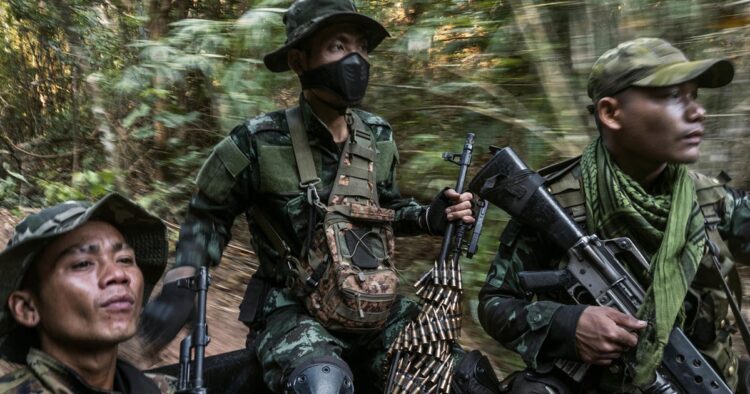China’s recent attempts to mediate between the Myanmar junta and ethnic rebels along its northern border are believed to be motivated primarily by self-interest, according to regional experts. The peace talks, held in Kunming on December 20, aimed at addressing the ongoing armed conflict between the military and the Three Brotherhood Alliance.
Experts suggest that China’s goals in convening these talks are twofold. Firstly, there is a concern about cyberfraud operations targeting Chinese citizens, and secondly, China aims to stabilize trade along the China-Myanmar border. The conflict has resulted in a daily loss of approximately USD 10 million in bilateral trade between the two countries.
Yun Sun, the director of the China program at the Stimson Center, emphasized the economic impact on border trade and the importance of resolving the conflict swiftly. While China’s main concern is not territorial control in Myanmar, it is keen on cracking down on cyber scams operating along the border.
The armed conflict has led to a defensive stance by the Myanmar junta, with analysts predicting increased support for a ceasefire. However, the rebels, under the People’s Defense Forces movement, are expected to continue their offensive, particularly in the northern Shan State.
China, adopting a neutral stance, aims to cooperate with whoever comes to power in Myanmar, showcasing a pragmatic approach. The analogy of China being a tiger watching two buffaloes fight illustrates its strategy of staying out of the conflict while maintaining diplomatic relations with the ruling entity, regardless of changes in power.
The alliance of rebel forces, known as the Brotherhood Alliance, made significant gains in key towns in war-torn Myanmar in 2023. The success of their campaign, particularly in Shan State, has inspired resistance forces in other parts of the country to seize control of several towns.
The Brotherhood Alliance, formed by three ethnic armies, initiated their offensive on October 27, leading to the capture of towns and weapons. The resistance movement, fueled by the alliance’s success, has seen various armed ethnic groups and the People’s Defense Forces combining forces to control large parts of the countryside, despite being fragmented.
China’s role in the ongoing conflict appears strategic, driven by economic and border security concerns, with a careful approach to prevent external interference. As Myanmar grapples with internal strife, the dynamics between the military junta, ethnic rebels, and external actors like China continue to shape the trajectory of the conflict.

















Comments